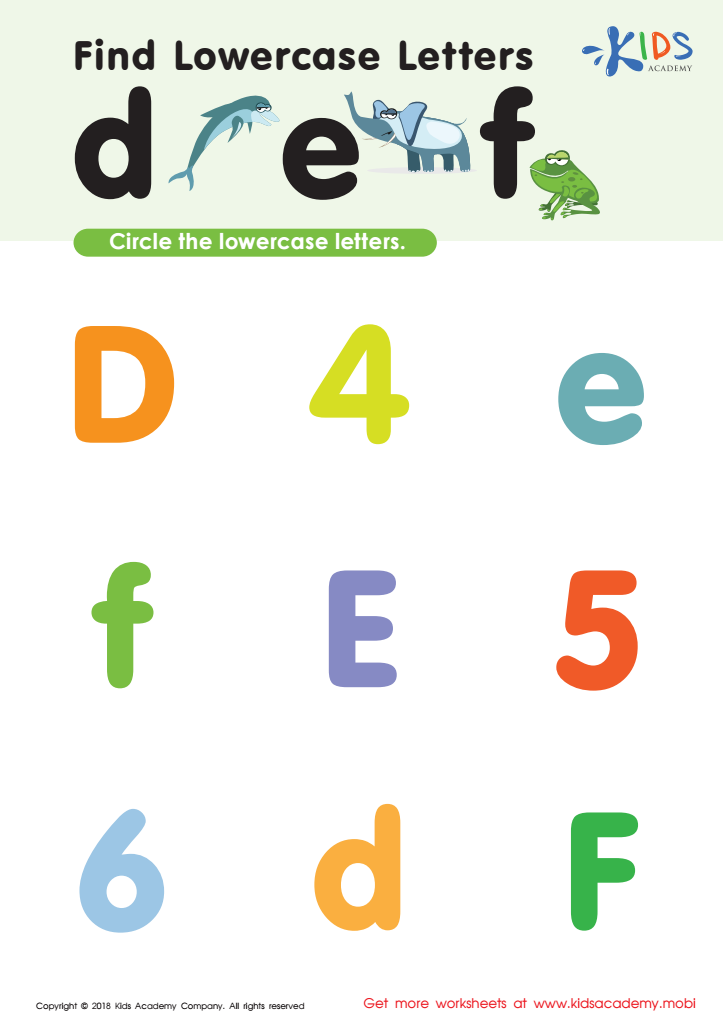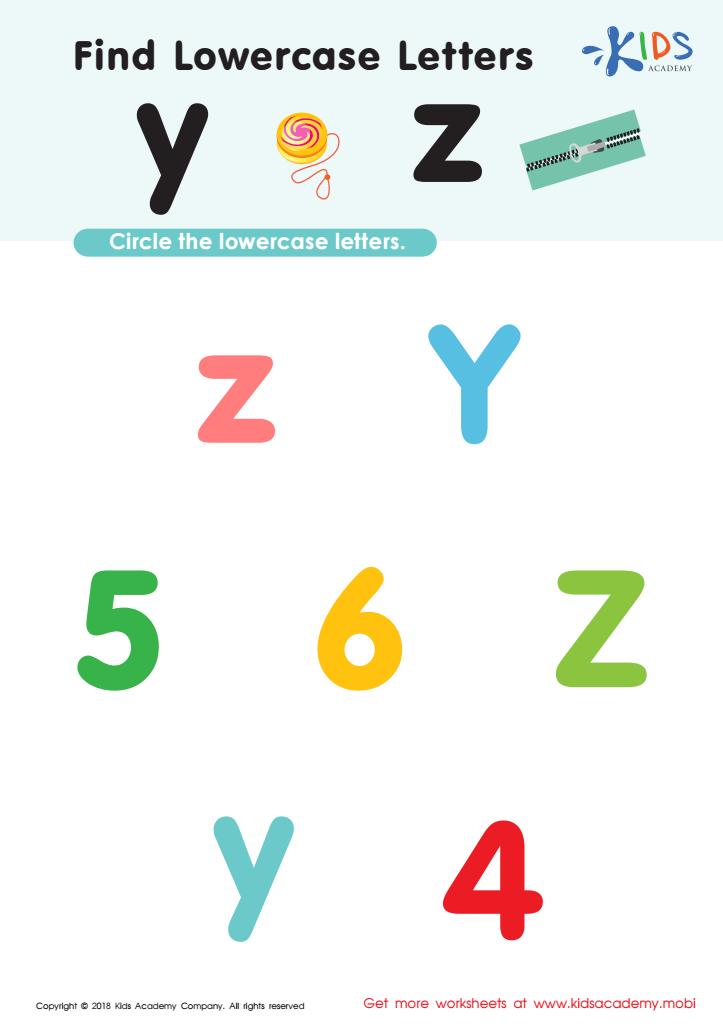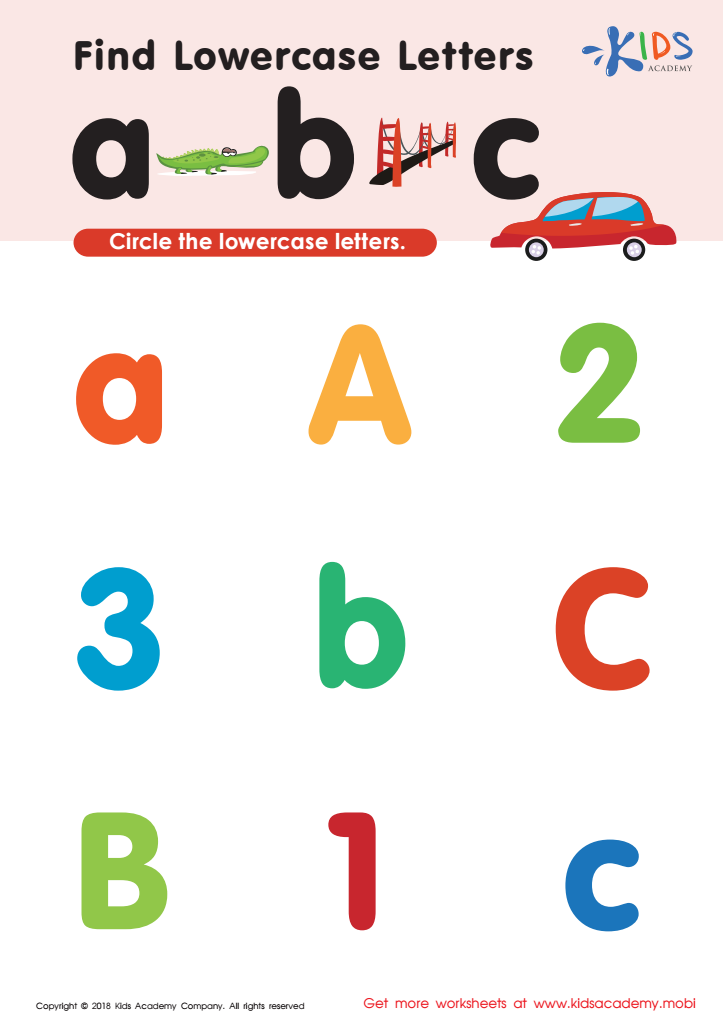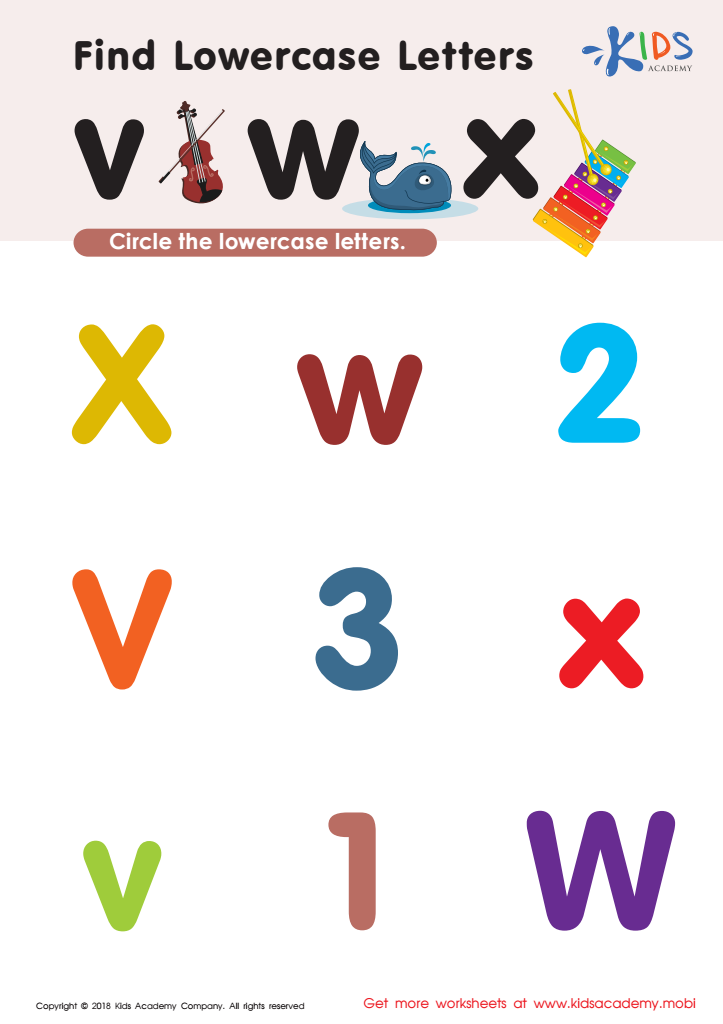Lowercase identification Normal Letter Recognition Worksheets for Ages 3-6
4 filtered results
-
From - To
Discover our engaging Lowercase Identification and Normal Letter Recognition Worksheets, specially designed for children ages 3-6. These worksheets make learning fun and interactive, helping young learners recognize lowercase letters with ease. Featuring vibrant illustrations and simple activities, your child will enjoy tracing, matching, and identifying letters while building essential foundational skills. Perfect for both classroom and at-home learning, our worksheets cater to various learning styles and promote early literacy. Encourage your child's love for letters and boost their reading readiness with our thoughtfully crafted resources. Get started today and watch your child thrive in their alphabet journey!


Find Lowercase Letters d e f Worksheet


Find Lowercase Letters y z Worksheet


Find lowercase letters a b c Worksheet


Find Lowercase Letters v w x Worksheet
Lowercase letter recognition is a critical aspect of early literacy development for children aged 3-6. It lays the foundation for reading, writing, and overall language acquisition. During this formative stage, children not only learn to identify letters but also understand their connection to sounds, which is vital for phonemic awareness. Recognizing lowercase letters is especially important as most of the text they will encounter in everyday life—such as books, signs, and menus—is printed in lowercase.
Parents and teachers play a pivotal role in fostering this skill. Encouraging lowercase letter identification supports children's self-confidence and empowerment, making them eager to engage with literacy. When children can easily recognize and differentiate lowercase letters, they become more adept at forming words and sentences, enhancing their overall reading skills.
Moreover, being proficient with lowercase letters helps strengthen fine motor skills through activities like writing and using manipulatives, contributing to their development in various domains. Attending to lowercase letter recognition provides a gateway for children not only to excel academically but also to enjoy the joy of reading and storytelling, fostering a lifelong love of literature. Engaging in fun, interactive activities can profoundly impact their language development, making this aspect of education essential for early childhood development.
 Assign to My Students
Assign to My Students




















